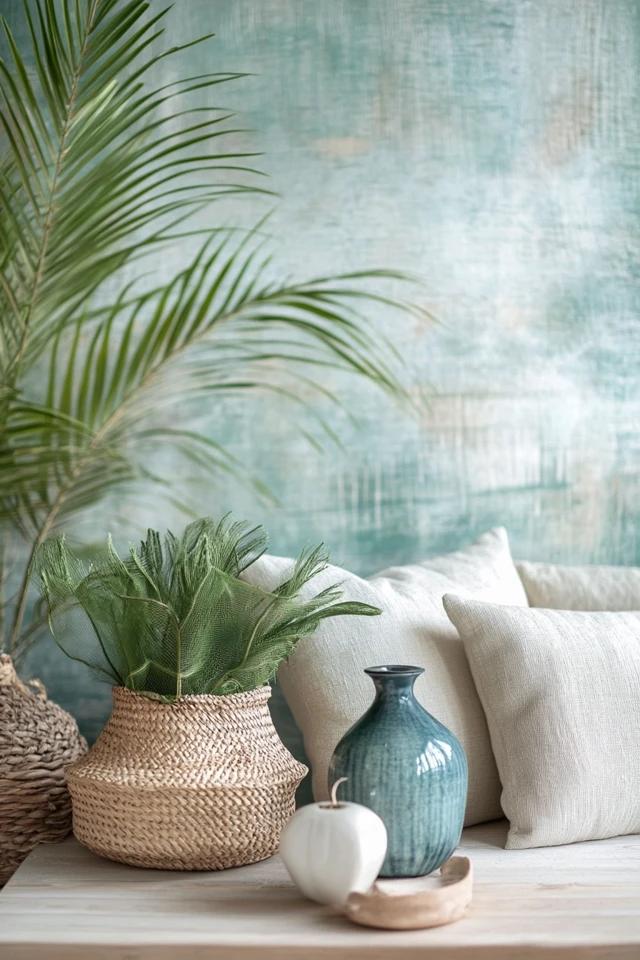Creating a relaxed coastal living room doesn’t require living by the sea—or even undertaking a complete renovation. It’s about capturing the essence of a breezy, calming shore in your space with simple, intentional changes. I’ve always been drawn to the tranquility of coastal interiors, but the thought of hauling in ropes, anchors, and too many nautical stripes wasn’t appealing. Instead, I set out to design a low-maintenance living room that exuded coastal charm without being over-the-top.
It started with a soft, sandy beige sofa. I added textured pillows, layered in a few ocean-hued accents, and voila—instant beachy vibes! The magic, though, was in the small details: light streaming through sheer curtains, a driftwood coffee table, and a vase filled with pampas grass. This effortless transformation made the room a serene oasis, perfect for unwinding.
If you’re ready to create a relaxed coastal living room that doesn’t demand a major overhaul, here’s how to do it.
1. Start With a Neutral Palette
Why It Works:
Neutral colors mimic the natural hues of sand, shells, and driftwood, creating a serene and cohesive base for your coastal living room.
How to Use It:
- Paint walls in warm whites, soft grays, or beige tones to establish a light, airy atmosphere.
- Stick to neutral furniture pieces, such as a linen sofa or a beige armchair, as your foundational elements.
- Use ocean-inspired shades sparingly—soft blues and greens can be added through accessories like cushions or throws.
Pro Tip: Choose a neutral area rug to anchor the room, like one made of jute or sisal for added texture.
2. Maximize Natural Light
Why It Works:
Natural light enhances the open, breezy feel of a coastal space and makes it feel connected to the outdoors.
How to Use It:
- Swap heavy drapes for sheer or linen curtains that allow sunlight to filter in gently.
- Use mirrors strategically to reflect light and create the illusion of a brighter, larger space.
- If natural light is limited, use warm-toned LED bulbs to mimic sunlight.
Pro Tip: A statement mirror with a driftwood or whitewashed frame can double as decor and a light enhancer.
3. Add Coastal Textures
Why It Works:
Textures are the secret to bringing a room to life without adding visual clutter, making them perfect for an effortless coastal look.
How to Use It:
- Incorporate woven textures with baskets, rattan chairs, or a jute ottoman.
- Add soft throws and pillows in light cotton or linen fabrics with subtle patterns, like stripes or chevrons.
- Include elements like a weathered wood coffee table or a ceramic vase with a textured finish.
Pro Tip: Layering textures (e.g., a smooth glass vase on a rough-textured wooden table) creates a sophisticated yet relaxed aesthetic.
4. Incorporate Subtle Coastal Decor
Why It Works:
A few well-placed accents can establish the coastal theme without feeling overdone.
How to Use It:
- Display a few small glass jars filled with sand, seashells, or beach pebbles.
- Add abstract coastal art, such as paintings of waves or beach landscapes.
- Use small decor items like a coral sculpture, a woven tray, or lantern-style candle holders.
Pro Tip: Keep it minimal. One or two coastal-themed pieces per surface are enough to evoke the vibe.
5. Bring in Greenery
Why It Works:
Plants bring freshness and life to the space, echoing the natural environment of a coastal setting.
How to Use It:
- Add a fiddle leaf fig or palm tree in a light ceramic or wicker planter.
- Use smaller plants, like succulents or air plants, on coffee tables or shelves.
- Incorporate dried greenery like pampas grass or eucalyptus for a low-maintenance option.
Pro Tip: Choose planters in natural textures, like rattan or white ceramic, to complement the coastal theme.
6. Choose Comfortable Furniture
Why It Works:
Coastal living rooms are meant for relaxation, so furniture should feel inviting and cozy.
How to Use It:
- Opt for plush seating with soft, neutral fabrics, like linen or cotton.
- Add oversized throw pillows and blankets for extra comfort.
- Use lightweight, movable furniture pieces, such as wicker chairs or nesting tables, to keep the space flexible.
Pro Tip: Avoid furniture with heavy, dark finishes—stick to light woods or whitewashed surfaces.
7. Use a Statement Lighting Piece
Why It Works:
Lighting sets the mood and can serve as a subtle focal point in a minimalist coastal design.
How to Use It:
- Install a pendant light or chandelier made of natural materials, like rattan, bamboo, or woven fibers.
- Use table lamps with ceramic or glass bases in ocean-inspired hues.
- Add lantern-style floor lamps to bring in a touch of coastal charm.
Pro Tip: Dimmable lighting adds versatility, allowing you to create a cozy ambiance in the evening.
8. Layer Coastal-Inspired Patterns
Why It Works:
Patterns add personality to the space without overwhelming the neutral palette.
How to Use It:
- Add striped pillows or throws for a subtle nautical nod.
- Incorporate area rugs with subtle patterns, like wave motifs or geometric designs in coastal colors.
- Use curtains or slipcovers with light, understated patterns.
Pro Tip: Stick to no more than two or three patterns in a room to maintain a cohesive and relaxed look.
9. Add Beachy Accents Through Artwork
Why It Works:
Art offers a way to personalize your space while subtly reinforcing the coastal theme.
How to Use It:
- Hang framed photos of the beach, abstract ocean-inspired paintings, or black-and-white seascapes.
- Create a gallery wall with a mix of coastal photography, line art, and textured pieces like woven wall hangings.
- Choose light wood or white frames to keep the look consistent.
Pro Tip: Use oversized artwork as a focal point above your sofa for maximum impact.
10. Create Cozy Nooks
Why It Works:
Coastal living rooms should feel welcoming and comfortable, encouraging relaxation and conversation.
How to Use It:
- Add a reading nook with a comfortable chair, soft throw, and side table.
- Use floor cushions or poufs for flexible, casual seating.
- Place a woven tray on the coffee table with candles, books, and a small vase of flowers.
Pro Tip: Keep the layout open to foster a breezy, coastal feel while ensuring cozy corners for lounging.
Picture Gallery
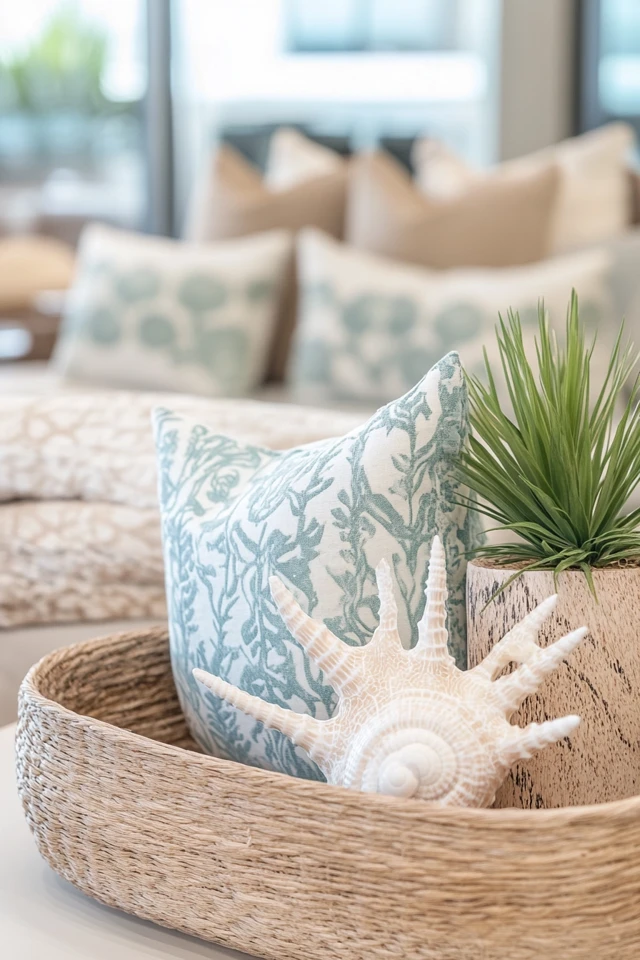
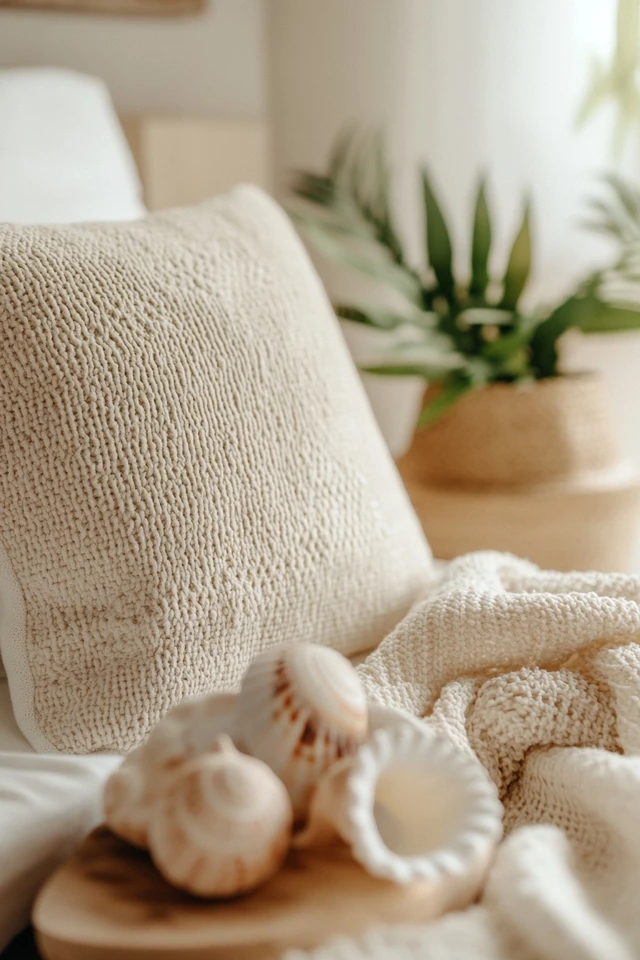
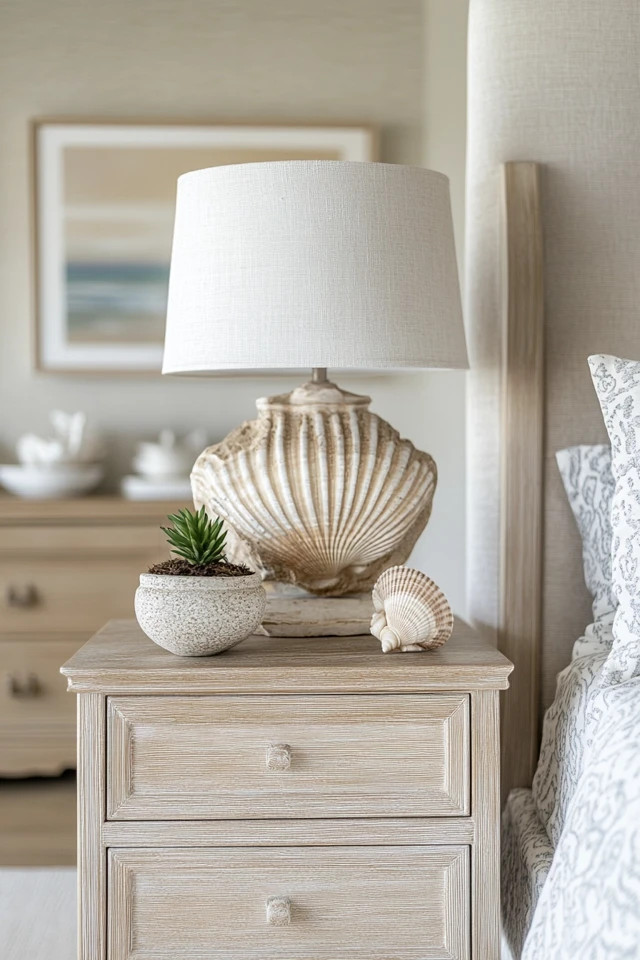
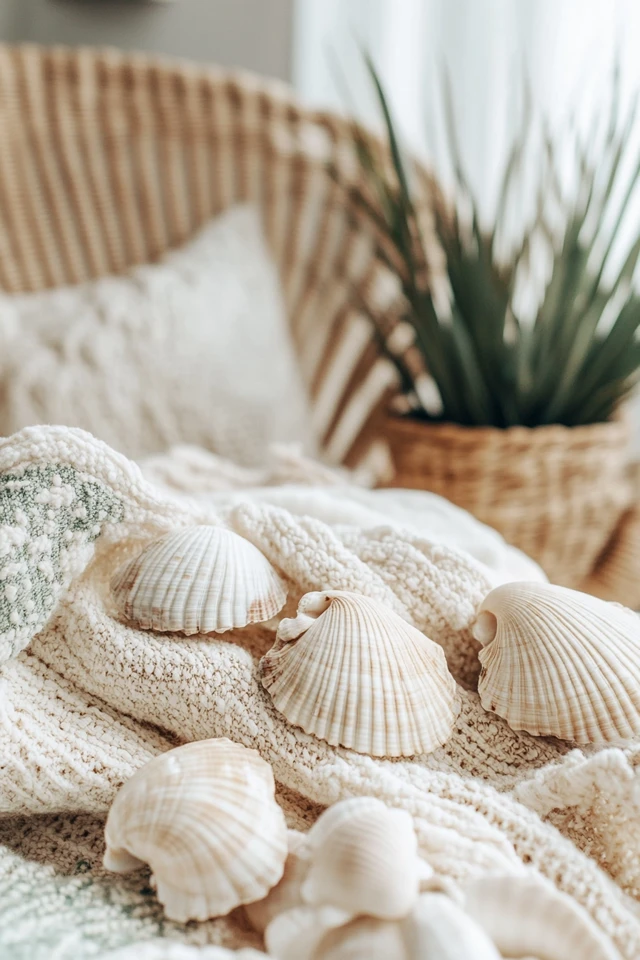
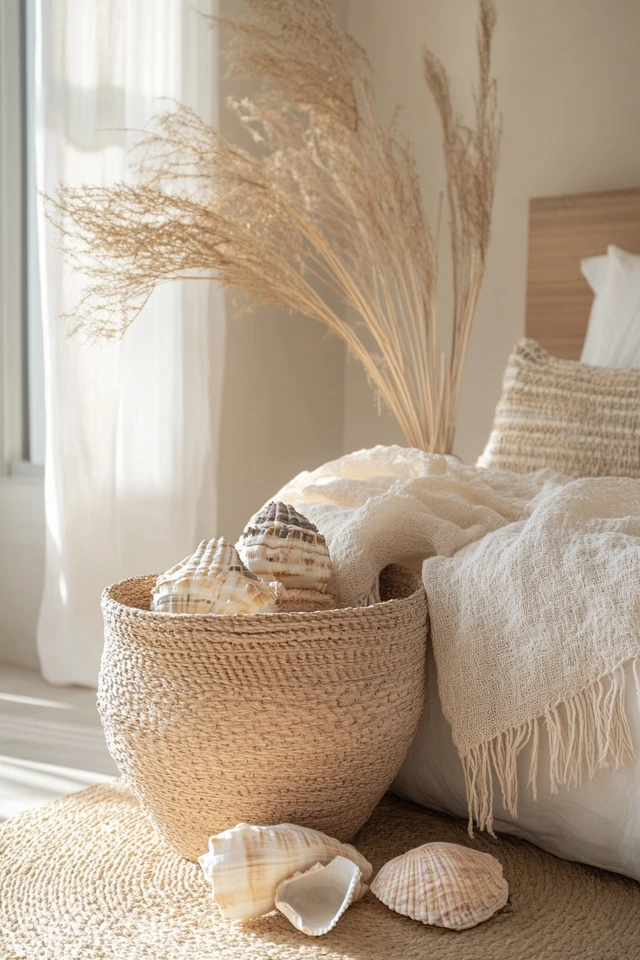
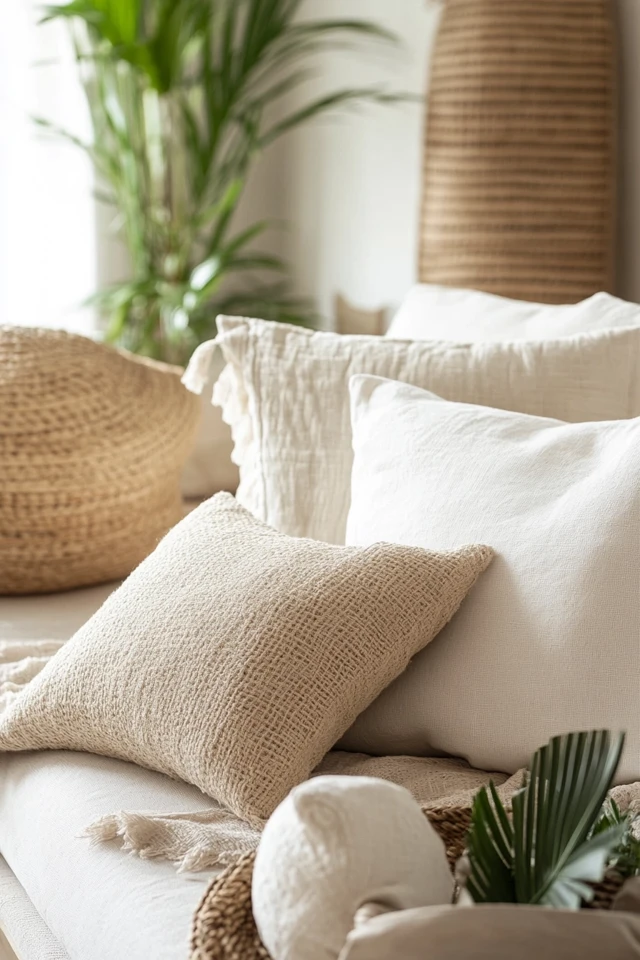
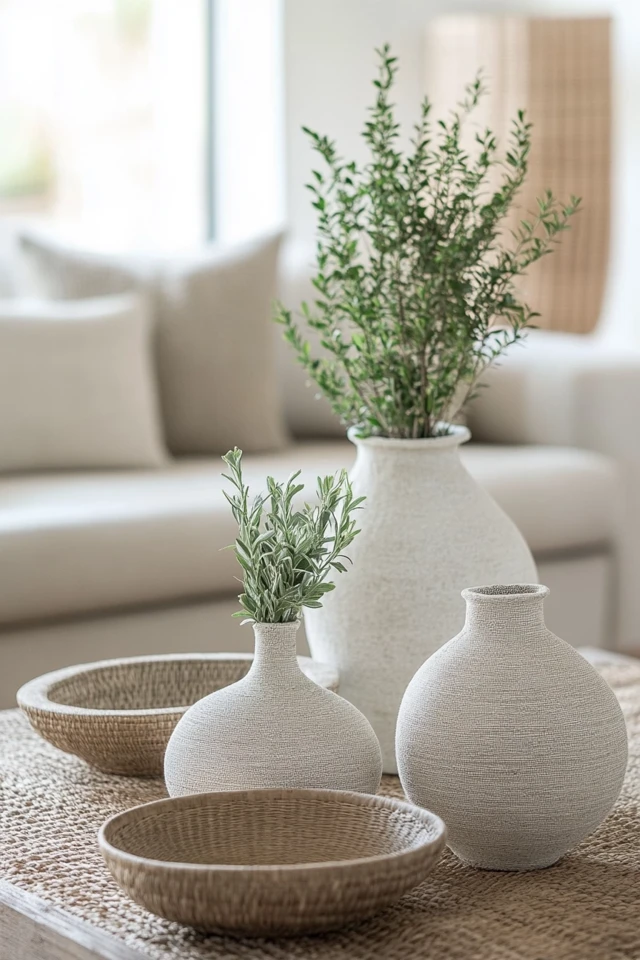
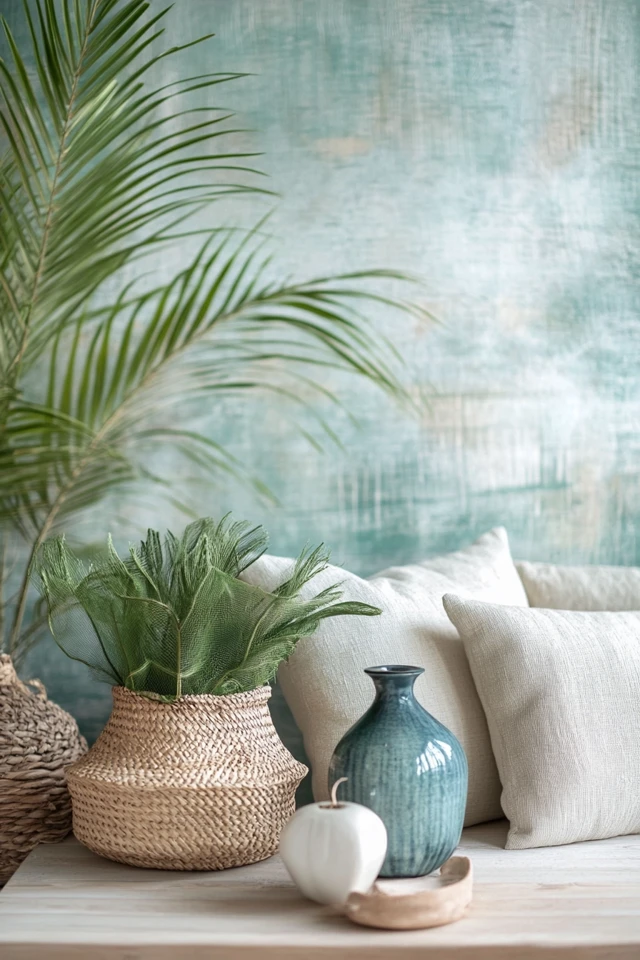
Conclusion
Transforming your living room into a relaxed coastal retreat doesn’t require major renovations or a complete overhaul. With a focus on neutral colors, natural textures, and a few thoughtfully chosen accents, you can create a space that feels like a calm, breezy escape.
Remember, the key is to keep it simple and intentional—let the light flow, layer textures, and add subtle nods to the beach. Whether you’re unwinding after a long day or hosting a casual get-together, your coastal-inspired living room will feel effortlessly welcoming and serene.
So grab that soft throw, light a beach-scented candle, and let your coastal sanctuary transport you to the shore, no matter where you are.
FAQs
1. What colors should I use for a relaxed coastal living room?
Stick to a neutral base with shades like white, beige, and soft gray. Add subtle accents of ocean-inspired colors like seafoam green or sky blue for a touch of coastal charm.
2. Can I create a coastal vibe without a complete redesign?
Yes! Small changes like swapping curtains, adding textured pillows, and incorporating coastal decor can make a big impact without a major renovation.
3. How can I avoid a cliché coastal look?
Focus on subtle nods to the coast, like natural materials and muted ocean tones, rather than overt nautical themes like anchors or bright blue stripes.
4. What type of furniture works best for a coastal living room?
Choose light, comfortable furniture with natural materials like rattan, wicker, or linen. Avoid heavy, dark finishes that clash with the breezy aesthetic.
5. What are some easy coastal-inspired decor ideas?
Use glass vases filled with sand or shells, hang abstract ocean-themed artwork, and incorporate woven baskets for functional and stylish storage.

